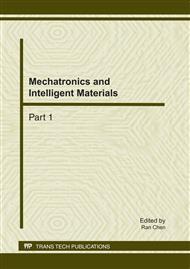p.846
p.850
p.856
p.861
p.866
p.871
p.876
p.881
p.886
Graphic Representation on Algebra Concepts of University Students Based on Clustering Approach
Abstract:
The purpose of this study is to integrate a knowledge management which provides graphic representation on concept structures based on clustering technique. The polytomous student problem chart (S-P chart) is adopted to classify students into proper learning styles according to response pattern with caution index and score. Furthermore, weighted polytomous ordering theory (OT) is used to construct graphic concept structure of each learning style. The integration of polytomous S-P chart and weighted polytomous OT could help knowledge management for students. In the study, the empirical data is the assessment of linear algebra from university students. The results show that each learning style has its own features of cognitive characteristics. In short, the integrated methodology can improve knowledge management for students more feasible. Finally, some recommendations and suggestions for future studies are discussed.
Info:
Periodical:
Pages:
866-870
Citation:
Online since:
February 2011
Authors:
Keywords:
Price:
Сopyright:
© 2011 Trans Tech Publications Ltd. All Rights Reserved
Share:
Citation:


